OVERVIEW
CONVERSATION SIMULATOR / A real-time conversation simulation environment in which different actors like student protestors or representatives of the leadership can be made to interact and in doing so surface a variety of perspectives regarding the camp’s presence in Gothenburg, and the cause it stood for. The technological backend of the prototype was fully coded by the game developer and friend Mourdjen Bari.
| VERSION | NOTES | VISUALS |
|---|---|---|
| V4 | UPDATING THE VISUALS AND NARROWING THE SCOPE The conversation simulator was at first supposed to have 7 characters and close to 5 locations around Gazaplatsen encampment. Due to technical challenges, we’ve had to limit the initial development to 3 characters (a student activist, the Vice-Chancellor, and a local resident against the camp) and 1 location, (the information tent). | 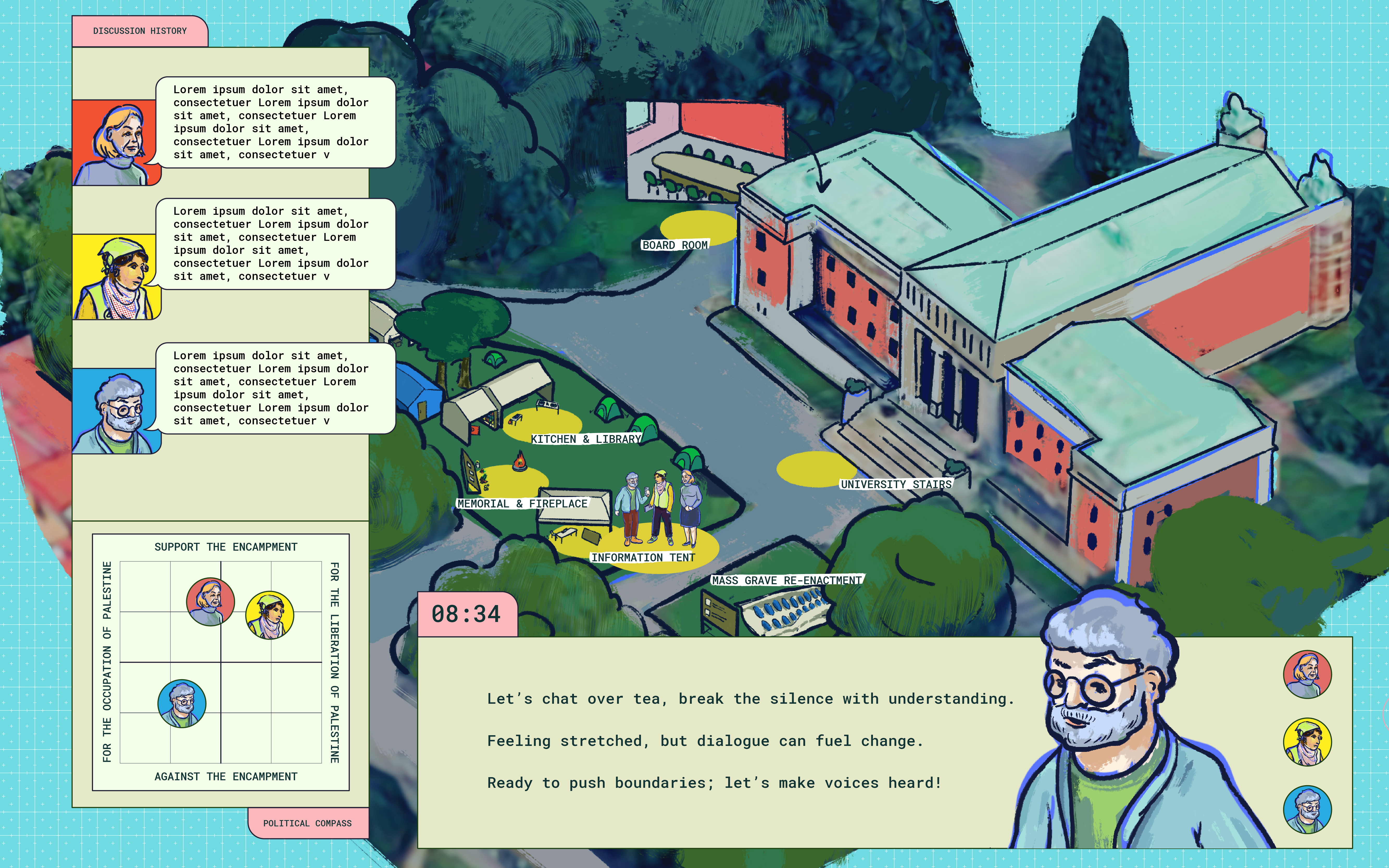 |
| V3 | CONSOLIDATING THE EXPERIENCE Because the experience should really make it possible to obtain surprising results, Mourdjen and I are trying to find ways to make players understand how they are navigating the range of ideologies and the argumentation that support them. This is likely to happen by bringing back the idea of the political compass inspired by the one from Disco Elysium. |  |
| V2 | MINIMUM VIABLE INTERACTION Mourdjen managed to get a proof of concept together where ChatGPT is given three characters to roleplay as based on the indications I provided in the previous phase. On my end, I started prototyping what the final UX might feel like. I used isometric assets found on Pinterest that I then collaged in Miro. | .png) 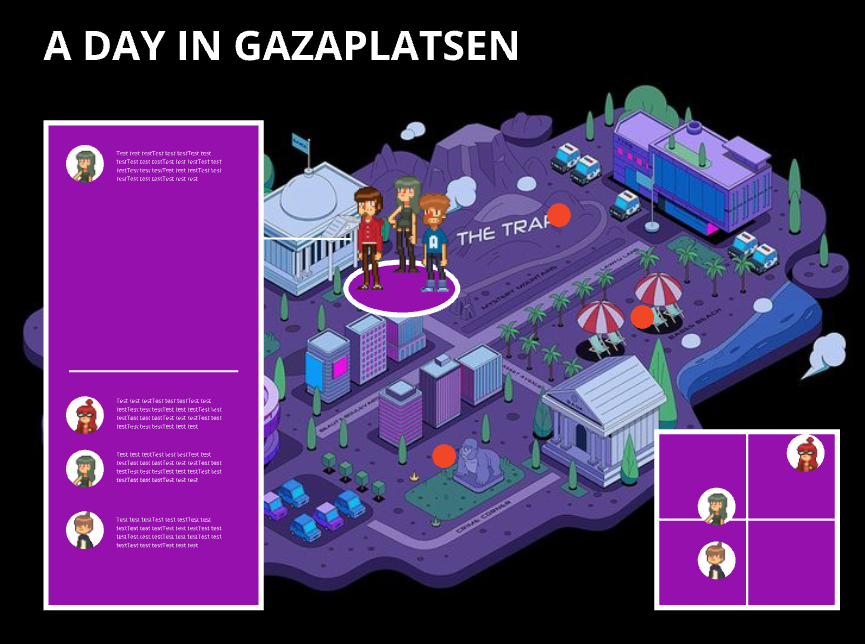  |
| V1 | MAPPING IDEOLOGIES The first prototype was created to test the basic structure of the simulation experience. It is inspired by this political compass of Disco Elysium’s exploration of NPCs’ ideologies. This prototype was created using discussions and moments I observed while being involved with the camp to map out the stances and possible motivations of of each actors for supporting or fighting the camp. The hope here being to encourage a reflection on the value of deliberation in public spaces and the role the encampment played in creating such an environment. | 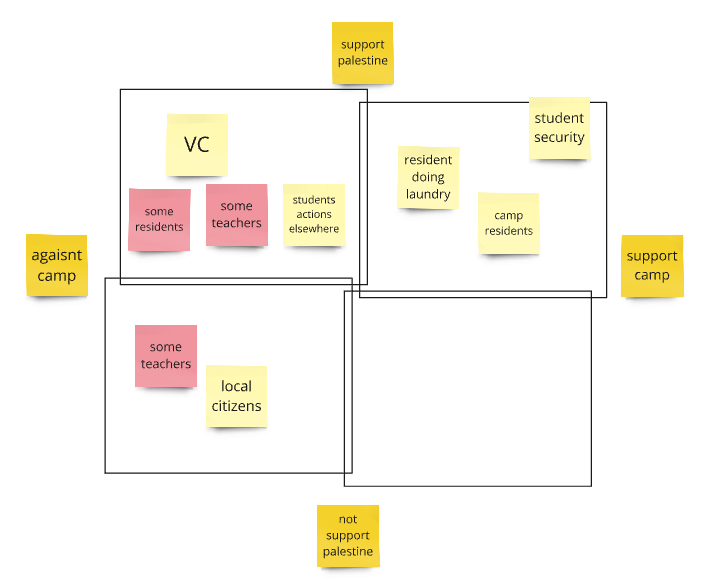 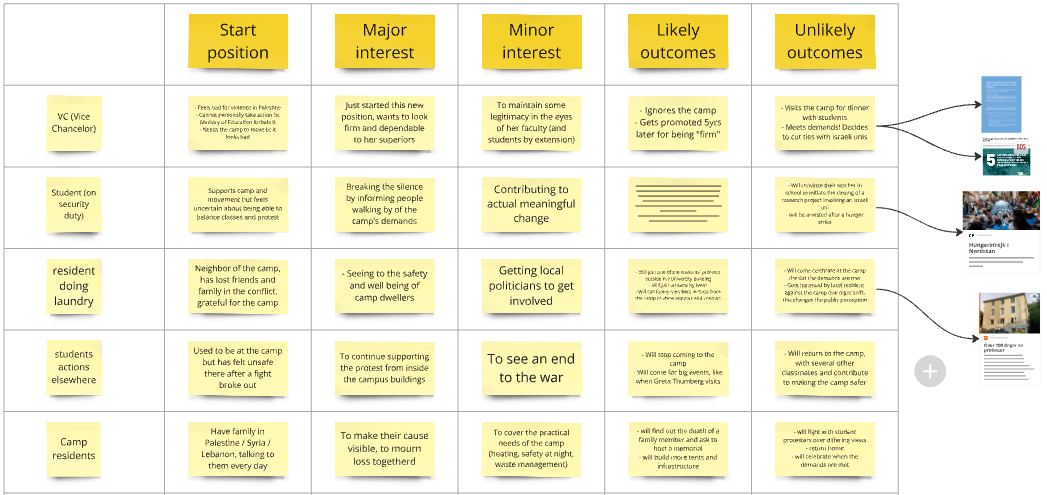 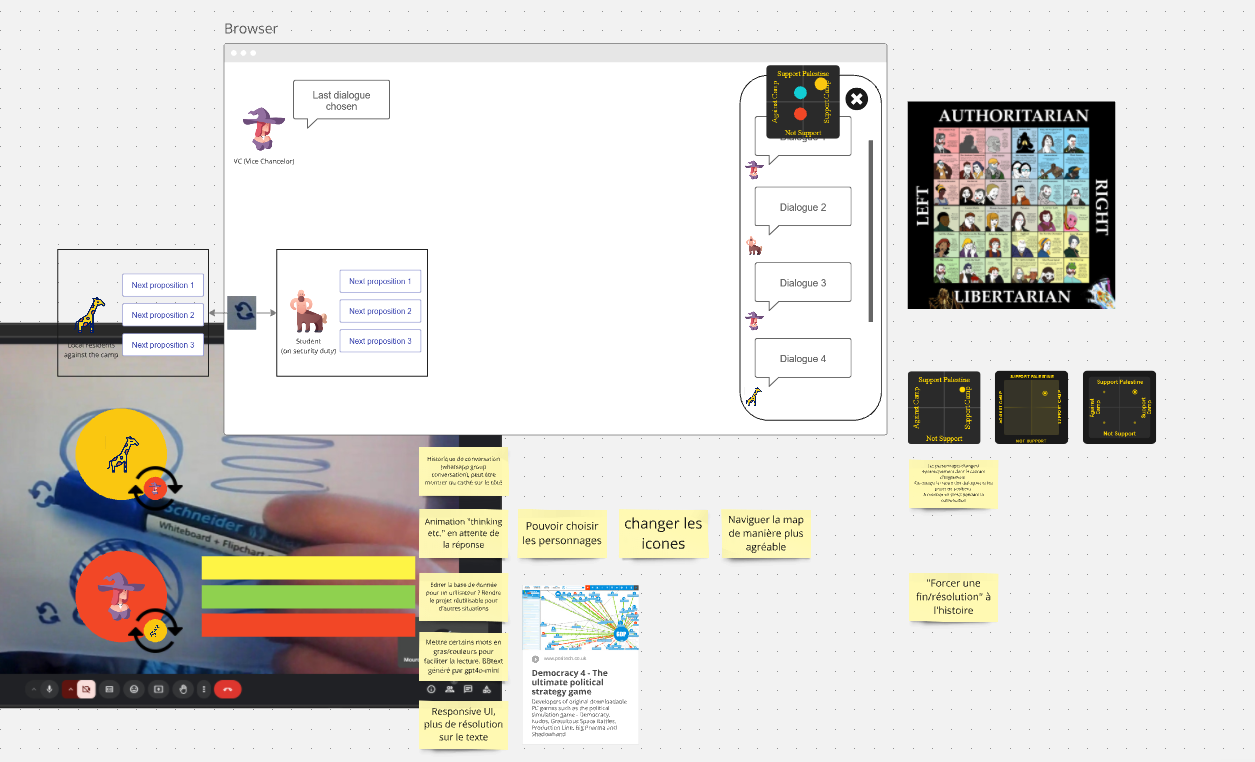 |